A few years ago, Paris-Roubaix was one of the few remaining races that could guarantee a tech feast for bike nerds.
We find ourselves here, in 2021, though, after a weekend packed full of incredible racing, with relatively little to talk about in terms of bike tech.
While Lizzie Deignan soloed to an historic victory in the Paris-Roubaix Femmes aboard a Trek Domane packed with cobble-cushioning tech, the elite men’s podium was made up of riders all aboard their standard aero road bikes, albeit with slightly larger (and, in many cases, tubeless) tyres.
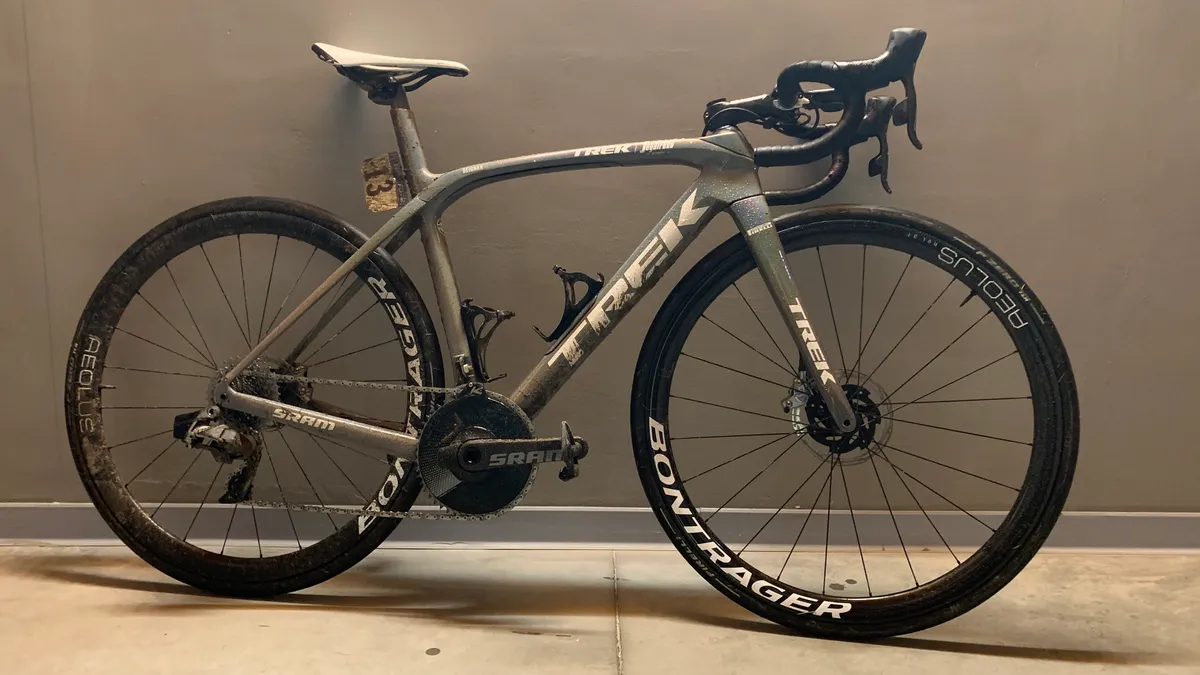
What happened then? Are modern racing bikes simply so good they can be used to win on all terrains? Or are riders and teams just being denied the choice they once had by sponsors exerting ever greater influence over them?
As always, it’s probably a bit of both.
The house always wins
We've touched on this before, but the rise of house brands within professional cycling has been happening faster than Julian Alaphilippe attacking on the Sint-Antoniusberg.
WorldTour bikes are now typically dominated by big-ticket sponsors and components from large brands, who have (understandably) become increasingly keen to see their kit used in all races.
While being handy with a black marker pen used to be a crucial skill for the professional mechanics (who often needed to ‘carefully’ disguise the fact non-sponsor correct items were being used), we don’t see so much of that anymore, except on prototype kit.
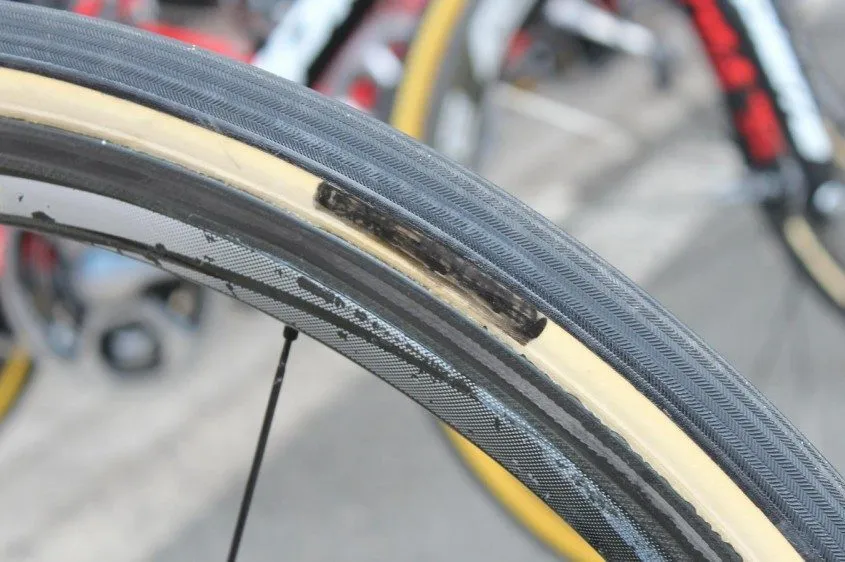
Given these restraints, most teams and riders are simply left with fewer choices when it comes to kit.
Sponsored by Continental? Well, you can have the Competition tubular or the new GP5000 S TR tubeless tyre. Want to use FMB, Dugast or some other tyres Continental doesn’t make? Tough luck.
Considering where Continental – and, in the women’s race, Pirelli, with Deignan winning on the P Zero TLR tubeless tyre – has focused its development recently, it’s hardly a surprise the new tyre comes out on top of the one that hasn’t seen an update in years.
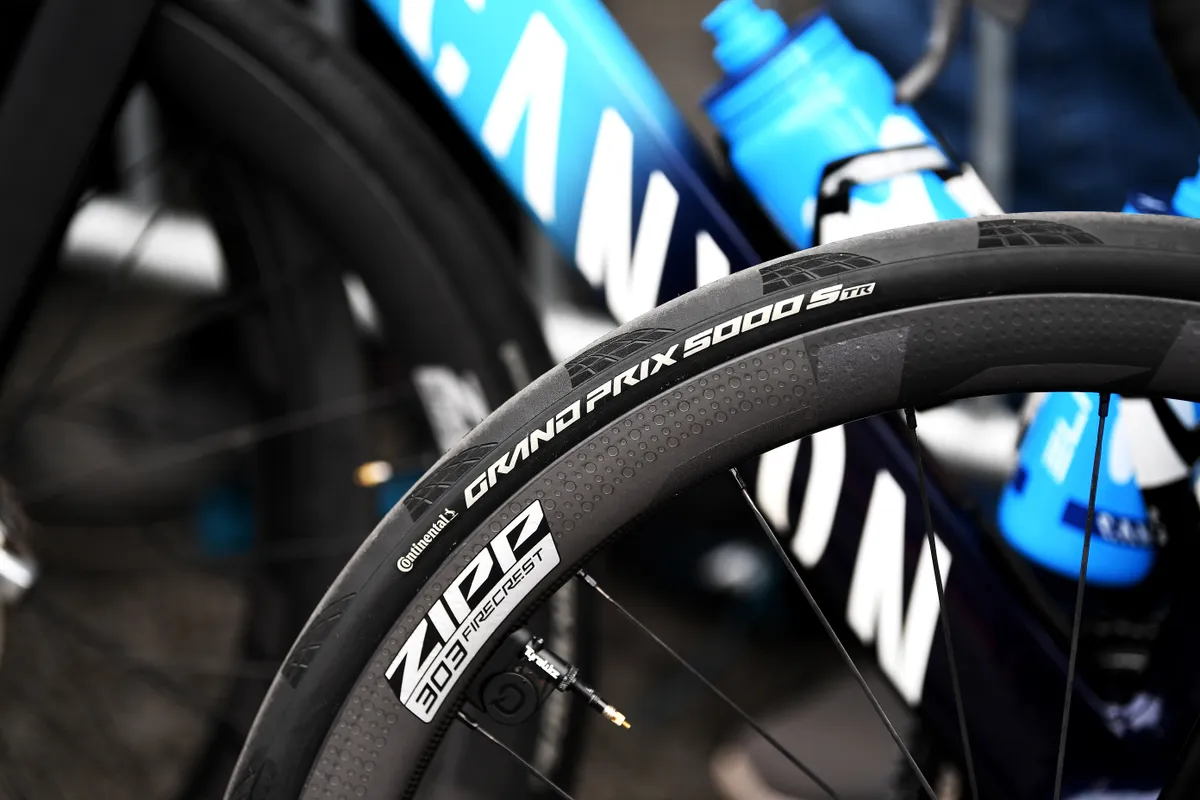
But the big tyre brands were out in force at this year’s Roubaix races, when the artisans used to have a much greater say. While the absence of Paris-Roubaix for two-and-a-half years saw wide tubeless tyres emerge as a key trend at the 2021 race, that’s left little room for under-the-radar sponsor swaps.
New bikes are also really good
Without wanting to sound like a paid-up cycling industry illuminati devotee, a big part of this trend towards conformity is down simply to the fact that modern race bikes are now pretty amazing machines.
I know many are sick of reading that every new road bike is a zillion watts faster at 50kph, 2kg lighter for the £10,000 frameset, 50 per cent laterally stiffer and yet still twice as vertically compliant as last year’s model, but some of those gains have actually made bikes much better.
Over the years, we've seen all manner of wild innovations aimed at gaining an edge on the cobbles. Cyclocross bikes, cantilever brakes and 32-spoke box section alloy wheels all used to be a relatively common sight at Paris-Roubaix, but these things simply aren’t required anymore.
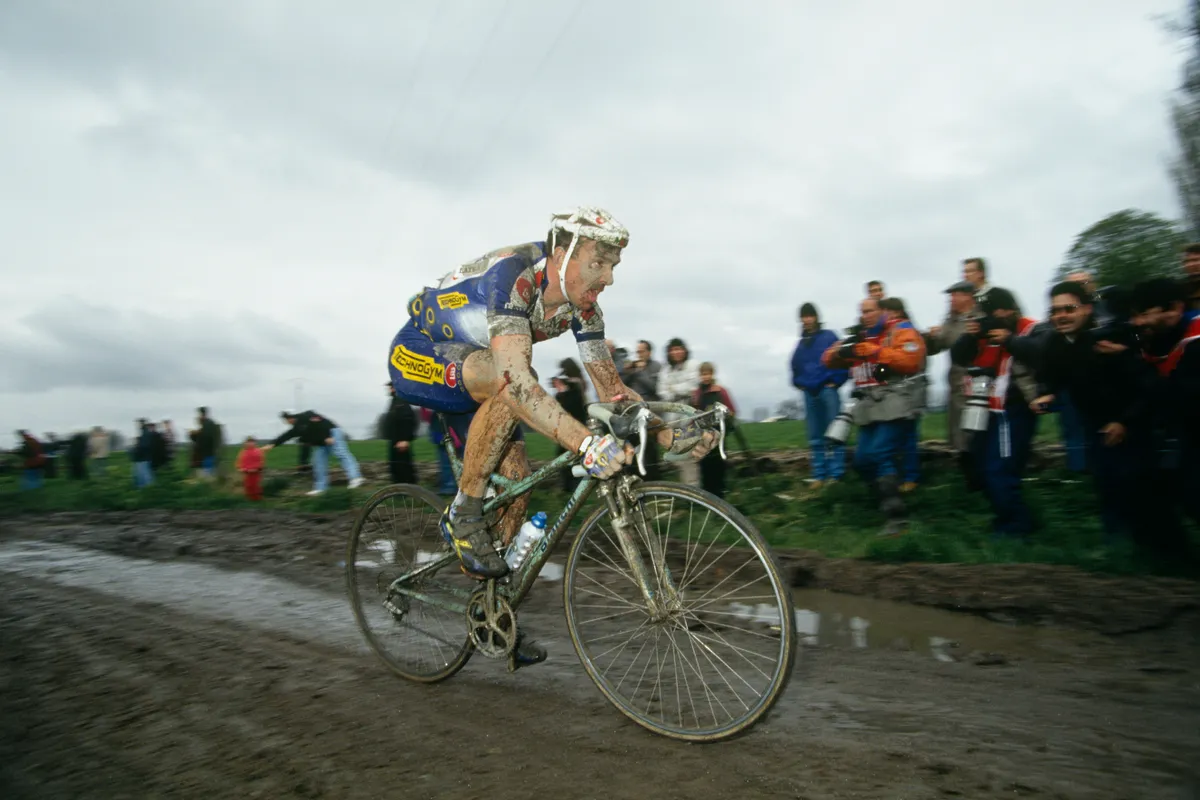
High-quality carbon fibre is an amazing material, and, when used skilfully, can make a bike aerodynamic, stiff under power and remarkably comfortable all at the same time, especially if you’re running wider tyres.
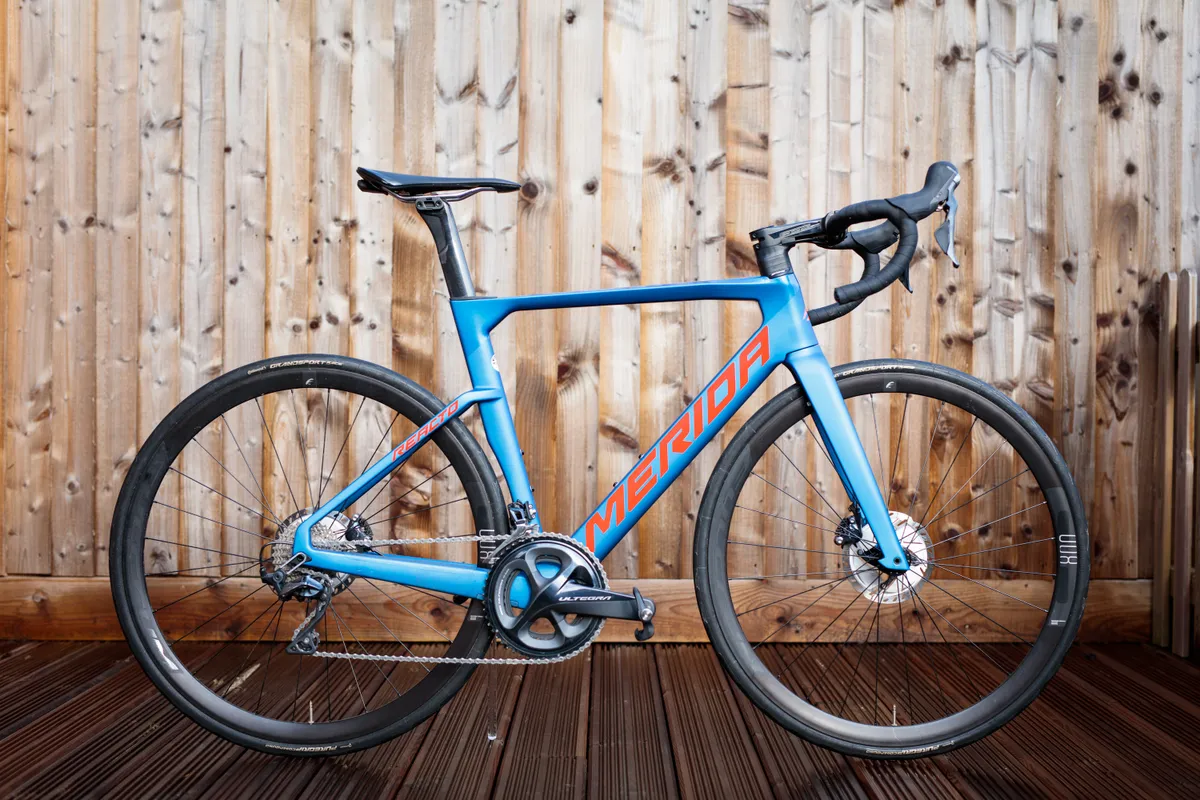
The Merida Reacto (as used by the winner of the elite men’s race, Sonny Colbrelli), for example, ticks all of those boxes. It’s a bike I was thoroughly impressed with when I tested the Ultegra spec Reacto 6000 version last year.
Equally impressive are two bikes which helped round out the podium, the Ridley Noah Fast (as ridden by Florian Vermeersch) and the Canyon Aeroad (as ridden by Mathieu van der Poel).
All three bikes are fast, comfortable and – in their most bling guises – not too heavy either. They also feature strikingly similar silhouettes and design cues.
With the UCI’s technical regulations being as prescriptive as they are, it’s no wonder so many brands are converging around a similar set of characteristics when it comes to making road racing bikes.
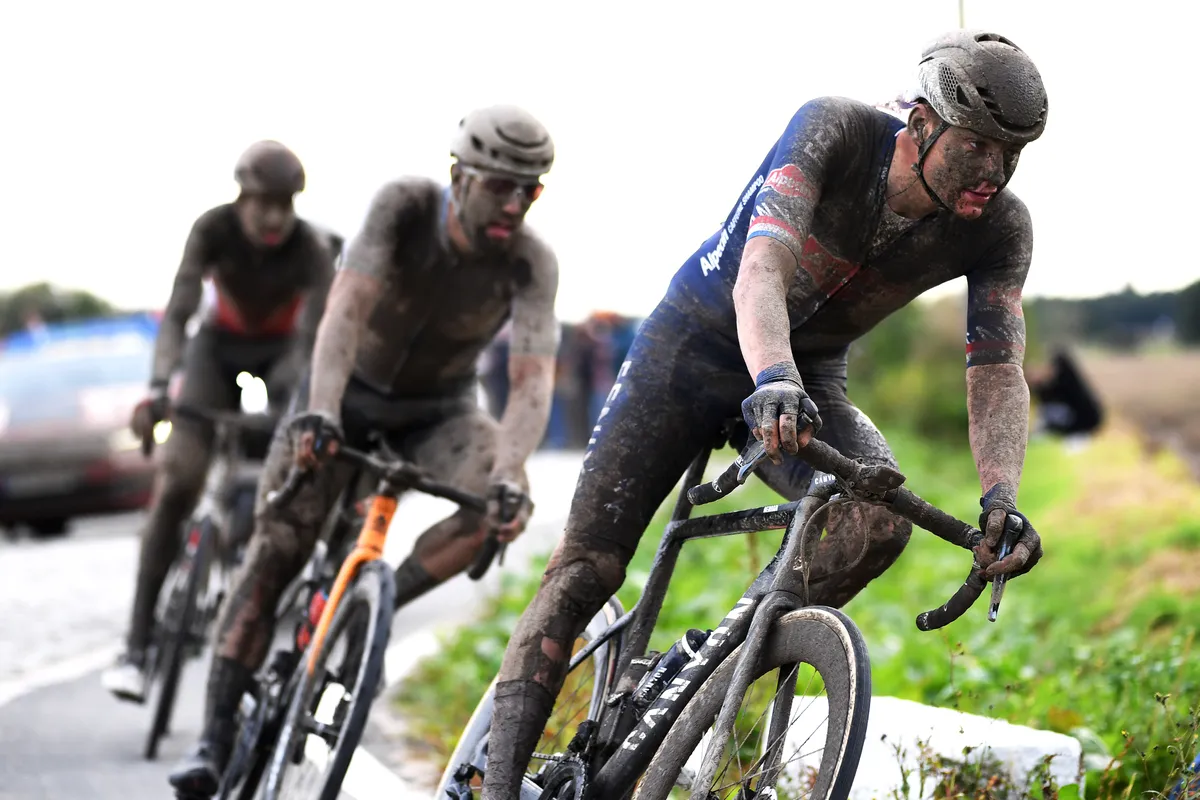
Colbrelli, Van der Poel and Vermeersch would have had a choice of frameset and wheels, as all three of their respective bike and wheel sponsors make endurance (or weight) focused framesets and shallower carbon rims. It’s notable, therefore, all three apparently chose to stick with their aero race bikes.
I wonder, had Deceuninck–Quick-Step, Bora-Hansgrohe and Trek-Segafredo riders had a free choice, how many would have chosen to ride a Specialized Tarmac SL7, Trek Madone or Trek Émonda over the Specialized Roubaix and Trek Domane?
These modern aero road bikes have adopted many of the endurance bike’s defining features, such as disc brakes, wider tyre clearances and carbon wheels optimised for wider tyres, negating any need to switch framesets.
The death knell for tubulars?

Most brands involved in cycling are pushing their latest products with the genuine belief they are better than the old ones.
To revisit the Continental example; while there are obvious financial considerations behind the drive for tubeless tyres to replace tubulars in the pro peloton (tubular tyres are a very niche product now, so there’s little financial incentive to keep developing or producing them), there are also performance advantages to be gained from the switch.
As there’s less material and no glue involved, equivalent tubeless or clincher tyres typically produce less rolling resistance than tubulars.
Clincher tyres have the win in the ease-of-use stakes but, as we already know, when you’ve got a professional sorting out your kit, ease of use is rarely a priority.
Tubeless tyres are less prone to pinch flats, too, and can make better use of tyre sealant and internal liners (something we’ve seen in the mountain biking world for a few years now), to offer improved puncture protection and a run-flat solution. The Lotto-Soudal team of Vermeersch was among those to use tyre inserts at Paris-Roubaix.
Just like aerodynamic bike frames, tubeless or clincher wheels and tyres do tend to be heavier than tubular equivalents. But many more pros are coming round to the fact this matters far less than traditionally thought, especially if the race doesn't end with a mountain-top finish.
Once the inevitable teething issues were ironed out, then, it was always likely tubeless tyres would eventually have their say in the pro peloton.
The future of Paris-Roubaix bike tech
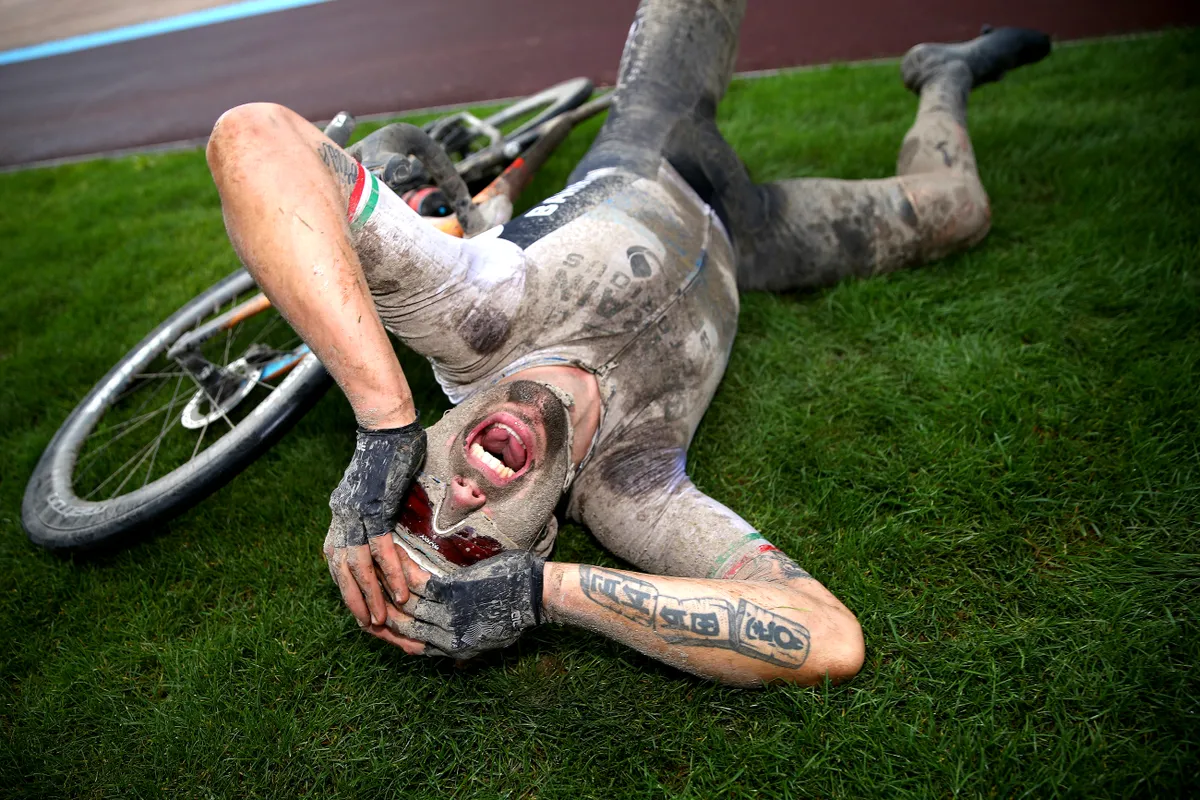
What does this all mean for the future of Paris-Roubaix bike tech, then?
For better or worse, I think the trends we’ve seen this year are indicative of where things are heading for WorldTour racing bikes in general.
I expect to see more widespread adoption of tubeless tyres and aero kit in all races, and even less use of tubulars and rim brakes. The days of whacky custom bikes, with obscure parts purchased from artisan brands are, I fear, firmly behind us.
It was fun while it lasted.
